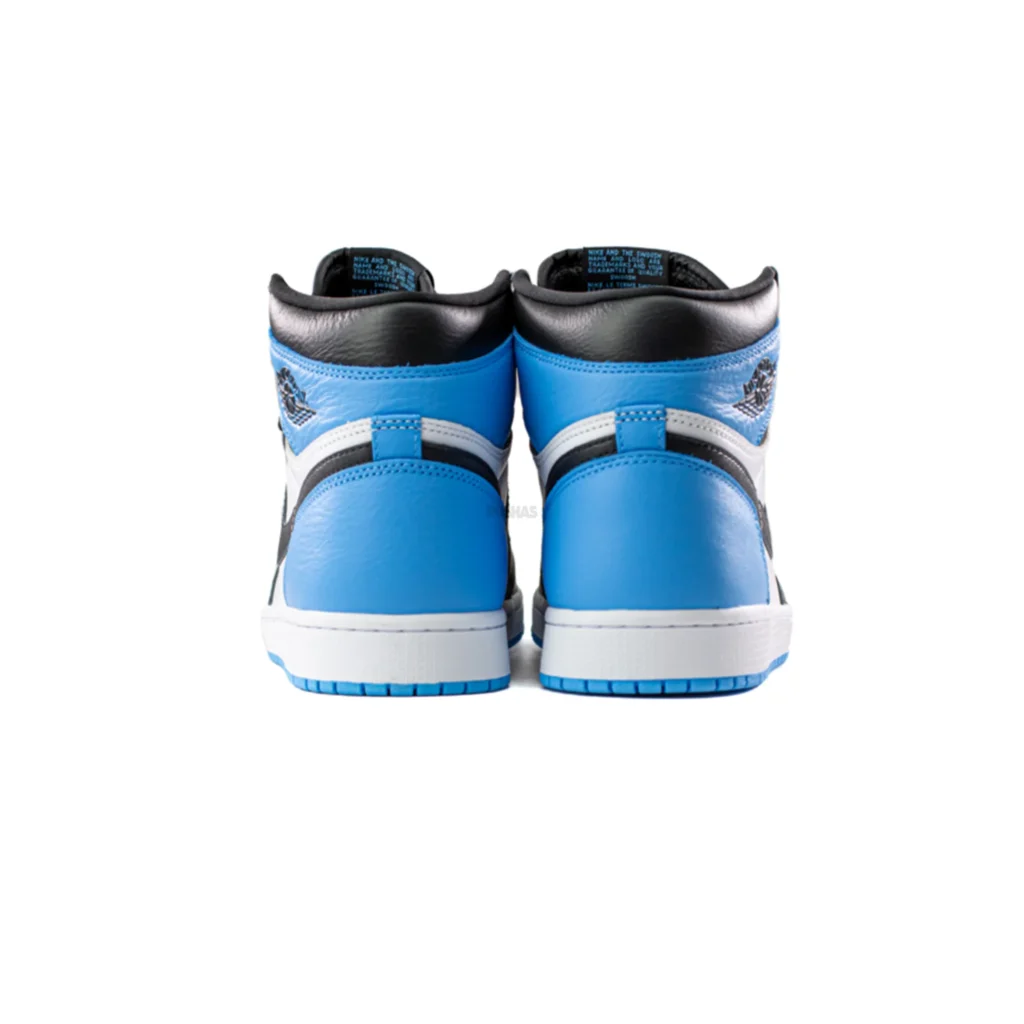The Authentic sneakers world has evolved from a niche subculture into a global phenomenon, with brands like Nike, Adidas, and Jordan becoming household names. Alongside this popularity explosion, replica shoes (commonly known as “reps”) have created a new layer of complexity in the footwear market. For many consumers, choosing replicas and authentic shoes involves weighing factors like quality, cost, ethics, and cultural significance. This essay delves into these aspects, comprehensively analyzing the differences between reps and authentic shoes and examining why each option appeals to different buyers.
1. Quality: The Core Distinction
Authentic Shoes: Built for Performance and Durability
Reps vs. Real Shoes: Authentic sneakers are synonymous with high quality, often made using premium materials and advanced technologies. For instance, Nike incorporates Flyknit fabric for lightweight performance and Air cushioning for enhanced comfort, while Adidas uses its Boost technology for energy return and Torsion systems for stability. These elements result from years of research and development, ensuring that authentic shoes provide a stylish look, functionality, and durability.
Authentic shoes also undergo strict quality control measures. Every stitch, panel, and logo is inspected to meet brand standards, producing a polished, consistent product. Whether the iconic Swoosh on a pair of Air Jordans or the reflective stripes on an Adidas Yeezy, authentic sneakers exude precision and attention to detail.
Replica Shoes: A Spectrum of Quality
Replica shoes, by definition, attempt to mimic the appearance of authentic sneakers, but their quality varies widely. High-tier replicas—often called 1:1 reps—are crafted with great care, using materials that closely resemble those in authentic shoes. These high-quality reps may include details like embossed logos, authentic packaging, and accurate colorways. However, even the best replicas rarely match the technological innovations of genuine footwear. For example, a rep might imitate the look of Nike Air soles but lack air cushioning, compromising performance and comfort.
Lower-quality replicas, on the other hand, are more easily distinguished from the real thing. They often feature cheaper materials, uneven stitching, and noticeable flaws in design. While these shoes may look acceptable from a distance, their lack of durability and comfort becomes apparent with regular use.
2. Price: Accessibility vs. Exclusivity
The High Cost of Authentic Shoes
The price of authentic sneakers is one of the main barriers for many consumers. While general-release models may retail for $100–$200, limited-edition releases, such as Air Jordans, Yeezys, or collaborations with high-end designers, often fetch significantly higher prices. Moreover, the resale market drives prices even higher. For example, a pair of Travis Scott x Air Jordan 1s might retail at $175 but resell for over $1,000, depending on demand.
For sneaker enthusiasts and collectors, this price tag is often justified by the prestige, quality, and exclusivity of owning authentic shoes. However, such prices can feel unattainable such prices can feel unattainable for casual wearers or budget-conscious buyers.
The Appeal of Replica Shoes
Replica shoes are a fraction of the cost of their authentic counterparts, with prices ranging from $50 to $150. This affordability is a significant draw for consumers who want the look of high-end sneakers without the financial burden. For some, the price difference outweighs concerns about authenticity, mainly if the primary goal is to achieve a specific aesthetic.
That said, the lower price of reps can be a double-edged sword. While affordable upfront, lower-quality replicas may need to be replaced more frequently due to their inferior materials and construction, potentially negating the initial savings.
3. Ethical Considerations: Legal and Moral Dimensions
Authentic Shoes: Supporting Innovation and Fair Practices
Purchasing authentic sneakers supports the brands that design and produce them, contributing to the industry’s ongoing innovation. Companies like Nike and Adidas invest heavily in research and development to create new technologies and materials. When consumers buy authentic shoes, they indirectly fund these advancements.
Moreover, authentic brands generally adhere to higher labor practices and environmental sustainability . Although no significant brand is entirely free from controversy, many have taken steps to improve transparency and accountability in their supply chains. For instance, Nike’s Move to Zero initiative aims to reduce carbon emissions and waste in production.
Replica Shoes: A Legal and Ethical Gray Area
Replica shoes exist in a legal gray area. Reps often infringe on intellectual property rights by copying designs, logos, and packaging. Depending on the country, buying or selling replicas may be illegal, leading to fines or other legal consequences. The practice raises ethical questions about supporting counterfeit industries even in regions where purchasing replicas is not explicitly prohibited.
The production of replicas often takes place in unregulated factories with little oversight. These facilities may exploit workers, pay low wages, and disregard environmental regulations. While authentic brands are not immune to such criticisms, replicas generally lack the transparency and accountability established companies are expected to uphold.
4. Cultural and Social Perceptions
Authentic Shoes: A Status Symbol
In sneaker culture, authentic shoes are more than footwear; they are status symbols. Owning a pair of rare Jordans or Yeezys signals an appreciation for design and a connection to the cultural moments these shoes represent. For many sneakerheads, authenticity is non-negotiable, as it reflects their dedication to the craft and culture of sneakerreps collecting.
The exclusivity of authentic sneakers adds to their allure. Limited-edition releases, collaborations, and exclusive drops create a sense of urgency and desirability. For some, hunting for authentic shoes is as rewarding as owning them.
Replica Shoes: Breaking Down Barriers
The rise of high-quality replicas has disrupted traditional notions of exclusivity. By making coveted designs accessible to a broader audience, reps democratize fashion and challenge the idea that style should come with a high price tag. For some consumers, the focus is on the aesthetic, not the brand name or retail price.
However, replicas can carry a social stigma, particularly within the sneaker community. Enthusiasts who value authenticity may view reps as inferior or inauthentic, leading to debates about what it means to appreciate sneaker culture truly.
5. Practical Considerations
Comfort and Performance
One of the most apparent differences between genuine and counterfeited shoes is performance. Authentic sneakers are built for a purpose—run purpose—running or casual wear. Features such as cushioning, arch support, and breathability provide a good walking experience, making them suitable for extended periods of wear.
Though aesthetically identical, replicas miss these performance-enhancing features. This might not be as imperative for everyday wearers, but for athletes and comfort-lovers, authentic would be the obvious choice.
Resale Value
Authentic sneakers, particularly rare or limited-edition releases, often retain or even increase in value over time. Collectors view these shoes as investments, knowing that they can fetch high prices in the resale market.
By contrast, replicas have little to no resale value. Once purchased, their worth is primarily limited to their utility as footwear.
6. The Future of Reps and Real Shoes
As technology progresses, the quality gap between replicas and genuine shoes is closing. Some high-tier replicas are only slightly distinguishable from actual shoes, posing challenges to brands regarding design protection and maintaining exclusivity. Meanwhile, consumer selectivity increases, and most are willing to pay a premium to ensure the product is authentic.
Brands may have to change and reconsider their pricing strategies and access limited-edition releases to make them more widely available. Programs that try to be more amenable, such as Nike’s SNKRS app and Adidas’s Confirmed app, have yet to solve the long-standing problems associated with consumers who miss the release they want most.
Conclusion
After all, the debate involving reps and real shoes concerns priorities. Authentic sneakers offer superior quality, comfort, and cultural significance, making them the preferred choice for enthusiasts and collectors. However, their high cost and limited Availability make them inaccessible to many.
While controversial, replica shoes provide an affordable alternative for consumers who prioritize style over authenticity. As the market for reps grows, it challenges traditional ideas about value, exclusivity, and accessibility in fashion.
Whatever your choice, whether you choose reps or real shoes, you need to weigh your priorities or the trade-offs and decide what’s best for you and what really suits you. Authenticity is unnegotiable for some people; for others, it’s affordability and aesthetics. Lastly, both options serve different purposes in a diverse and ever-evolving sneaker market.



